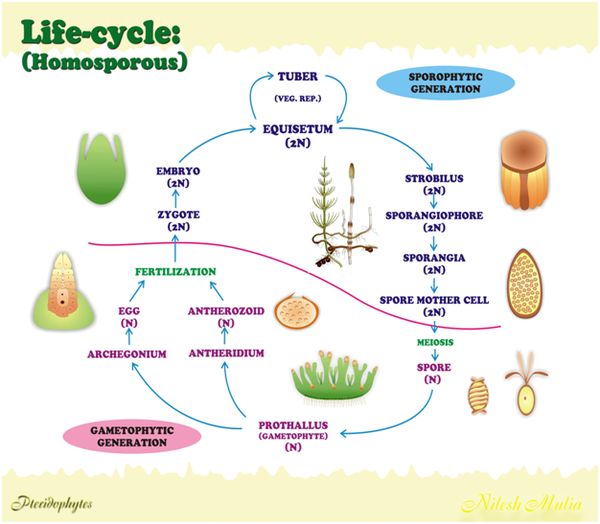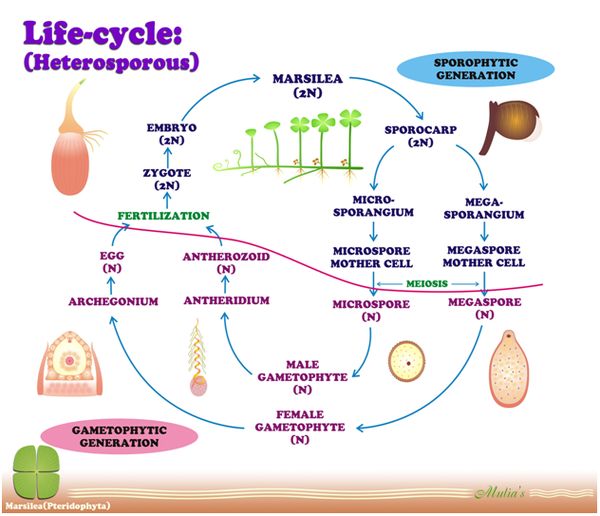LIFE CYCLE OF PTERIDOPHYTES The life cycle of the fern differs from both higher plants (Gymnosperm, Angiosperm) and Bryophytes. In bryophytes the gametophytic generation is the dominant phase in the life cycle and the sporophyte phase is dependent upon it whereas in angiosperms, the sporophyte is the dominant phase and the gametophyte is dependent upon it. However, in pteridophytes, both the sporophytic phase and gametophytic phase in the life cycle are independent of each other. The reproduction in pteridophytes takes place with the help of spores. Some pteridophytes give rise to two different types of spores – large, female spores called as megaspores and small, male spores called as microspores. Such pteridophytes are referred to as ‘Heterosporous’ pteridophytes. The living species of Heterosporous pteridophytes are small herbaceous perennials usually not more than a few inches high and fall into six genera namely Azolla, Salvinia, Marsilea, Pilularia, Isoetes, and Selaginella (Schaffner, 1905). Those pteridophytes which possess only one kind of non-sexual reproductive spores are referred to as ‘Homosporous’ pteridophytes. These pteridophytes possess true fibro-vascular system, true roots and leaves and fall naturally into three distinct classes – Ferns or Filicales, Horsetails or Equisetaceae and Lycopods or Lycopodiaceae (Schaffner, 1906). The sporophyte of the pteridophyte produces spores inside the sporangia after meiosis. The sporangia develop either on the ventral surface of leaves (as in case of ferns) or in the axil of stem and leaves (Lycopodium, Selaginella). The sporangia bearing leaves are called as ‘sporophylls’. The development of the pteridophytes is of two different types:
The spores germinate to give rise to the gametophyte known as prothallus which is green and bears sex organs – antheridia and archegonia. The homosporous pteridophytes form monoecious prothallus whereas the heterosporous pteridophytes form the dioecious prothallus. The antheridium gives rise to numerous antherozoids which are ciliated. Water is essential for the fertilization process as the antherozoids travel to the archegonia in the presence of water. The fertilization between the male and female gametes results in the formation of zygote which gives rise to the sporophyte. Figure 1: Life cycle of a HomosporousPteridophyte (eg: Equisetum) Figure 2: Life cycle of a HeterosporousPteridophyte (eg: Marsilea) |

